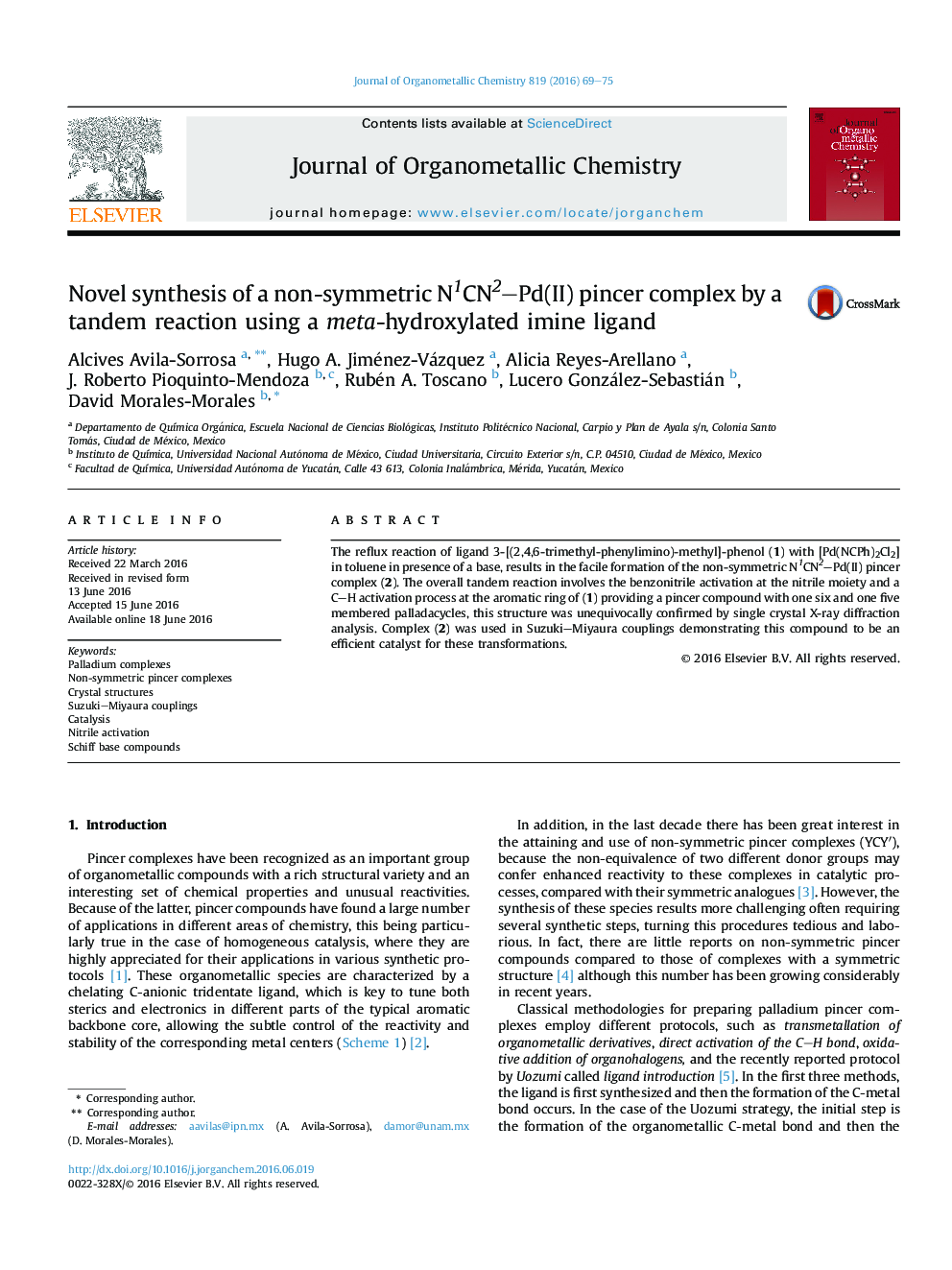| Article ID | Journal | Published Year | Pages | File Type |
|---|---|---|---|---|
| 1324452 | Journal of Organometallic Chemistry | 2016 | 7 Pages |
•A N1CN2-Pd(II) non-symmetric pincer complex (2) was obtained in facile manner in good yields.•The N1CN2-Pd(II) non-symmetric pincer complex (2) exhibited good catalytic activities in Suzuki–Miyaura Couplings.•The structure of the non-symmetric pincer complex (2) was unequivocally determined by X-ray diffraction techniques.
The reflux reaction of ligand 3-[(2,4,6-trimethyl-phenylimino)-methyl]-phenol (1) with [Pd(NCPh)2Cl2] in toluene in presence of a base, results in the facile formation of the non-symmetric N1CN2Pd(II) pincer complex (2). The overall tandem reaction involves the benzonitrile activation at the nitrile moiety and a CH activation process at the aromatic ring of (1) providing a pincer compound with one six and one five membered palladacycles, this structure was unequivocally confirmed by single crystal X-ray diffraction analysis. Complex (2) was used in Suzuki–Miyaura couplings demonstrating this compound to be an efficient catalyst for these transformations.
Graphical abstractThe tandem process involving benzonitrile activation of [Pd(NCPh)2Cl2] and a CH activation process at the aromatic ring of the ligand 3-[(2,4,6-trimethyl-phenylimino)-methyl]-phenol (1) leads to the facile formation of the non-symmetric N1CN2Pd(II) pincer complex (2). The structure of this compound was unequivocally determined by single crystal X-ray diffraction analysis, exhibiting a pincer motif with one six (imidic ester) and one five (imine) membered palladacycles with the Pd(II) center located into a slightly distorted square planar environment. Complex (2) was proved to be an efficient catalyst for Suzuki–Miyaura couplings.Figure optionsDownload full-size imageDownload as PowerPoint slide
